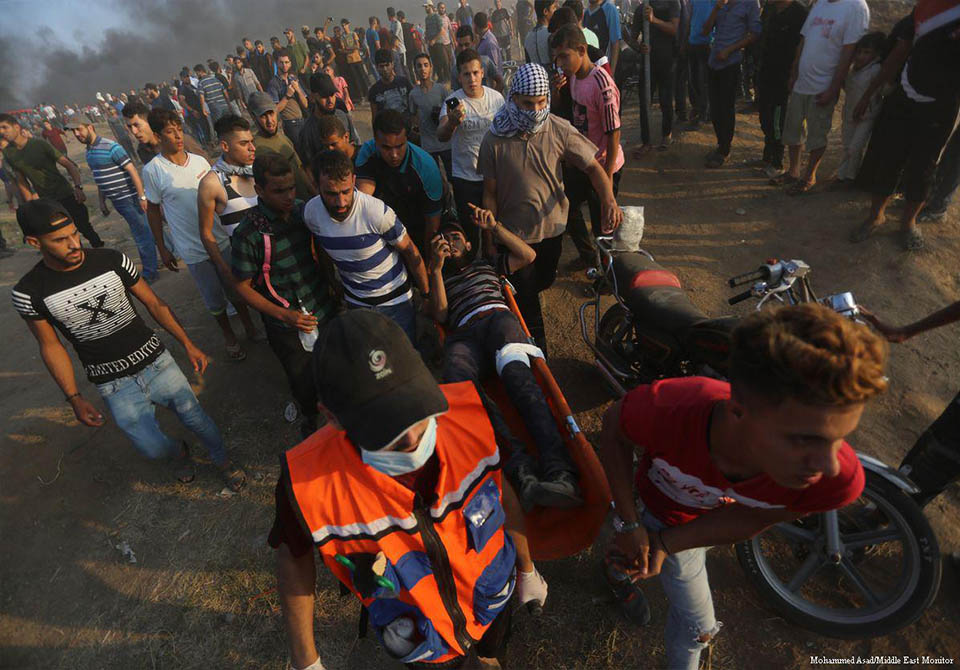NGO: Most Palestinian demonstrators shot in Gaza not in immediate vicinity of fence

The majority of Palestinian demonstrators injured by Israeli soldiers in the occupied Gaza Strip since March were not in the immediate vicinity of the perimeter fence when shot, according to newly-published research by Israeli NGO B’Tselem
Since the “Great March of Return” protests began, more than 5,800 Palestinian demonstrators have suffered live gunshot injuries, in addition to more than 180 demonstrators shot and killed.
Over recent months, B’Tselem field researchers in the occupied Gaza Strip conducted an extensive survey of hundreds of protesters who were shot and injured, including dozens of children.
The sample was designed “to incorporate various protests sites and dates in order to achieve as diverse, comprehensive and reliable a picture as possible, given the complex setting of protests that have been taking place over a long period of time and at many sites along the perimeter fence.”
According to the data published by B’Tselem, 41 per cent of those shot and injured were hit when they were “in the immediate vicinity of the fence”, defined as within ten metres of it.
Thirty-five per cent, meanwhile, “reported being hit at a spot further away from the fence, up to a distance of 150 meters from it”, while 22 per cent “reported being injured at a distance greater than 150 meters from the fence”.
Thus, in total, 58 per cent of the hundreds of injured demonstrators surveyed by B’Tselem were “not in the immediate vicinity of the fence” when shot by Israeli soldiers.
Additional findings of the research include the fact that two-thirds of the children surveyed (41 individuals) “reported being injured while they were watching the protest, waving a flag, photographing or filming the protest, moving away from the protest, or treating the wounded”.
B’Tselem noted that 83 per cent of the surveyed demonstrators require “prolonged, ongoing medical treatment”, 57 per cent require “rehabilitation and physical therapy”, and ten per cent of the individuals surveyed are now physically disabled.
Source: Middle East Monitor

WRITE YOUR COMMENT